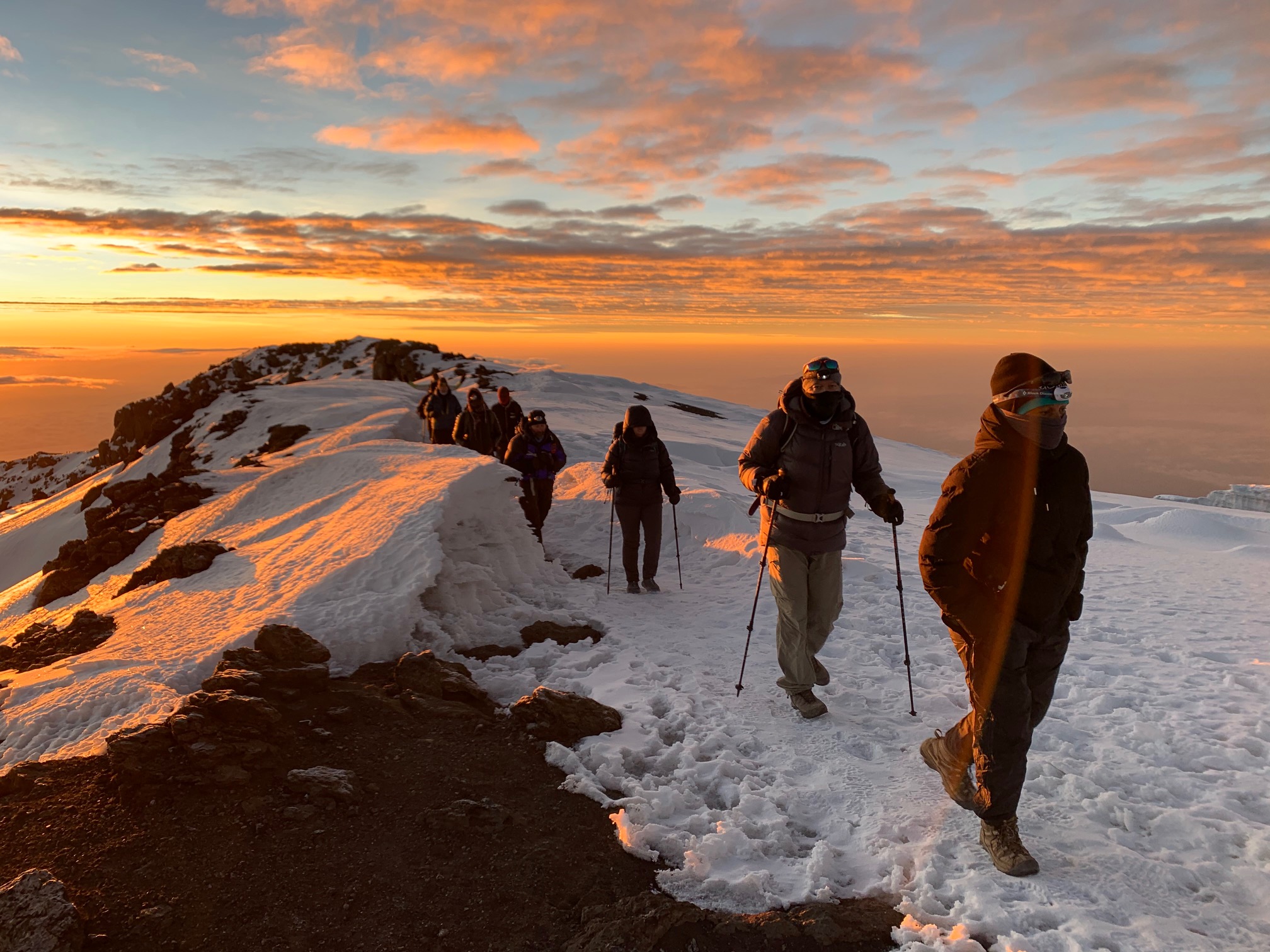

Written by

The Roof of Africa is unique in the fact that this massive natural structure possesses the ability to create weather that is its own. And, from the origin to the summit, you will find yourself weaving through different climatic zones. These zones have varying patterns of Kilimanjaro Weather, culminating to present one giant symphony of experiences.
From the kaleidoscope of changing conditions to the mystical encounters above the peaks, Kilimanjaro’s dramatic beauty lies in the ever-changing skies. This blog post will set the scene for the different characteristic features of Kilimanjaro Weather and what sort of conditions you can expect to encounter on the mountain.
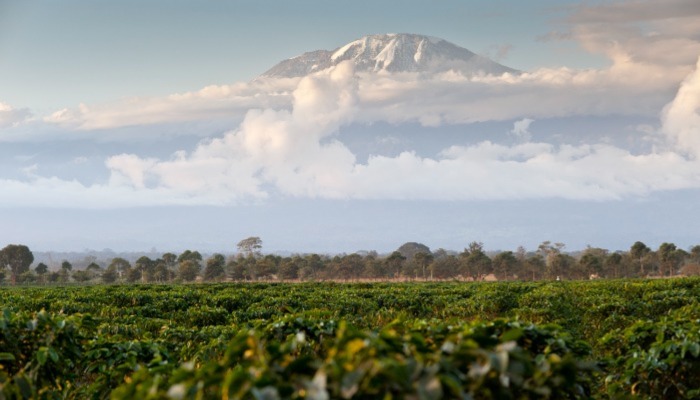
Because of Kilimanjaro’s proximity to the equator, it does not experience wide temperature shifts seasonally. Instead, the Mount Kilimanjaro Weather is determined by the altitude and the time of the day.
The following are the Mount Kilimanjaro Climbing zones from the lowest to the highest altitude along with the average annual precipitation and a bit of background about each zone.
The cultivation zone is the area that encircles Kilimanjaro. It surrounds the foot slopes of the mountain that consists of cultivated farmland or bushland. The fertile volcanic soil in the proximity of Kilimanjaro and also abundant in the cultivation zone is perfect for farming. The zone is characterized by moderate temperatures and is the first zone you’ll pass during your Kilimanjaro Hike.
Altitude – 2,600 to 6,000 feet (800 to 1,800 metres)
Precipitation – 20 to 70 inches (500 to 1,800 millimetres)
Forest Zone
The forest zone of Kilimanjaro experiences abundant moisture levels, water and precipitation in the form of springs and streams from the mountains’ upper slope.
This zone is characterized by warm and humid temperatures with mists existing under the heavy canopy forested zone. The forest zone is almost always wet and muddy due to the constant rainfall.
Altitude – 6,000 to 9,200 feet (1,800 to 2,800 metres)
Precipitation – 39 to 78 inches (1,000 to 2,000 millimetres)
This is the next Kilimanjaro Weather zone that you’ll encounter after traversing the thick rainforest zone. The Moorland or Heath Zone is characterized by vast grasslands and giant heathers.
Altitude – 9,200 to 13,200 feet (2,800 to 4,000 metres)
Precipitation – 51 to 21 inches (1,300 to 530 millimetres)
Alpine Zone
The alpine zone is arid and desert-like with patches of drought-tolerant vegetation scattered throughout. It is even windier in this zone though the amount of rainfall significantly decreases.
During the day it is typically warm but during the night temperatures get quite chilly. Another experience that you’ll get here is camping beneath the glittering night sky – presenting you with a great stargazing opportunity.
Altitude – 13,200 to 16,500 feet (4,000 to 5,000 metres)
Precipitation – 10 inches (250 millimetres)
The Arctic zone is the last Kilimanjaro Climbing zone and consists of the summit and peak area of the mountain. It’s located at an elevation of over 16,000 feet. This zone is characterized by minimal precipitation and rainfall occurs in the form of snow.
This Kilimanjaro ecological zone falls under extreme altitudes and the thinning of air in the atmosphere at these higher altitudes results in the oxygen levels being half of the normal sea level rates, around 49% to be exact.
You can typically expect harsh weather conditions here along with strong gusts of wind and below-freezing temperatures. Thus, layered clothing is highly recommended to keep you warm.
Altitude – 16,500+ feet (5,000+ metres)
Precipitation – 4 inches (100 millimetres)
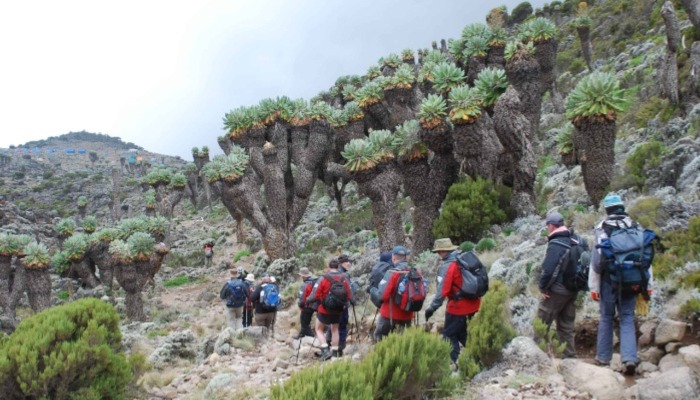
Climbing Kilimanjaro is a test of endurance and determination, made all the more challenging by the ever-changing weather. As you ascend through the different vegetation zones, you’ll experience a gradual shift in climate. The lower slopes greet you with lush rainforests, enveloping you in a humid embrace. The air is thick with moisture, and the rain showers are frequent companions on your journey.
Moving higher, you’ll enter the moorland and alpine desert regions, where the temperature drops significantly. The days may be pleasantly warm, but as the sun sets, a biting cold settles in. Here, the winds howl fiercely, making every step a battle against the elements. Proper layering and sturdy Kilimanjaro Gear become your allies in the face of these formidable conditions.
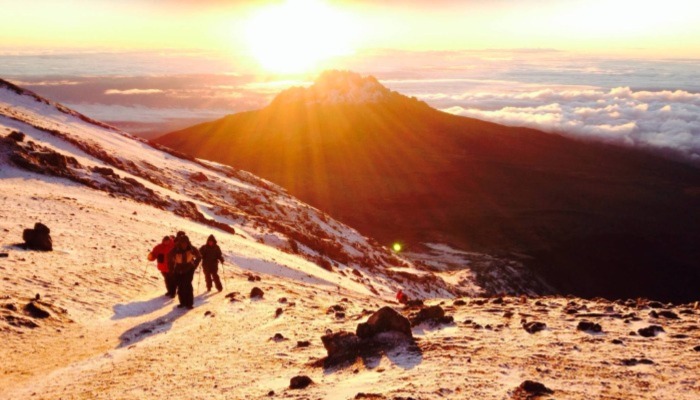
One of the most enchanting aspects of a Kilimanjaro Climb is the awe-inspiring spectacle of sunrise and sunset. As you near the summit, the vast expanse of the African plains unfolds beneath you, stretching out as far as the eye can see.
And as the sun sinks below the horizon, the sky sets ablaze, creating a dramatic backdrop for your triumph over the mountain’s challenges.
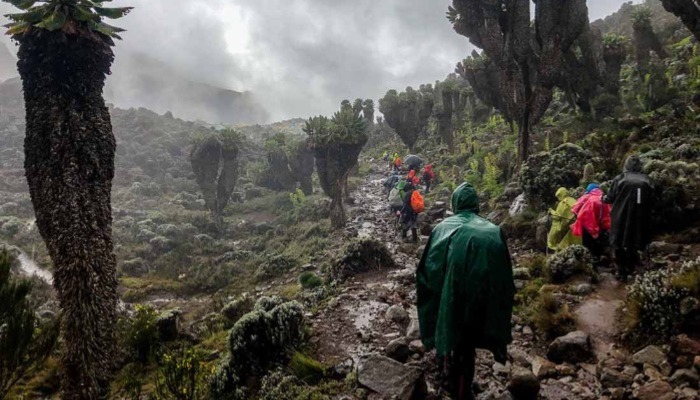
Kilimanjaro is known for its ever-present shroud of clouds, which adds an otherworldly touch to the mountain’s mystique.
The mist swirls around you, obscuring your view one moment and revealing stunning vistas the next. The Dance of the Clouds is an enchanting ballet, a constant reminder of nature’s power and beauty.
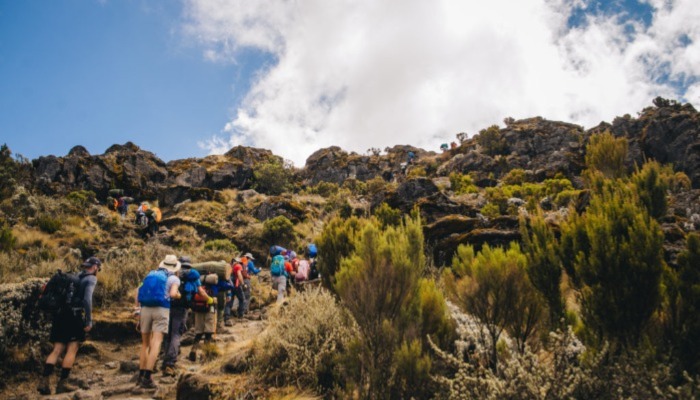
Perhaps the most striking characteristic of Kilimanjaro Weather is its unpredictability. The mountain has a reputation for throwing surprises at climbers, with weather conditions shifting rapidly and unexpectedly.
Experienced guides and Kilimanjaro Porters, well-versed in the mountain’s weather patterns, ensure your safety and provide valuable insights to help you adapt to changing conditions.
All in all, we’ve gone over the major ecological zones of Kilimanjaro and offered you some valuable insights into the ever-changing Kilimanjaro Weather. Now you’re well equipped to see the dance of the clouds and distinct weather zones of the mountain for yourself.
And as you conquer the summit during your Mount Kilimanjaro Climbingexpedition you’ll witness the ever-changing skies, and become part of Kilimanjaro’s symphony, harmonizing with nature’s grand performance.
Mar 29, 2024



Tanzania Tribe Safari is an exceptional organization focused on delivering a customized Tanzanian experience to its customers. I highly recommend them to anyone interested in traveling to Tanzania in search of a one-of-a-kind experience.
The trip of a lifetime! Tanzania Tribe Safari created a seamless experience for us from wonderful hotels and a tented camp to a safari experience that kept us in awe. Our safari guide Amini wore many hats during our trip and had eyes of an eagle!
Oh my gosh! Where do I start? My three sisters and I booked a trip to Tanzania and Zanzibar through Tanzania Tribe Safari. It can be marked as a trip of a lifetime! Our safari guide, Amini was very knowledgeable about the animals and terrain.